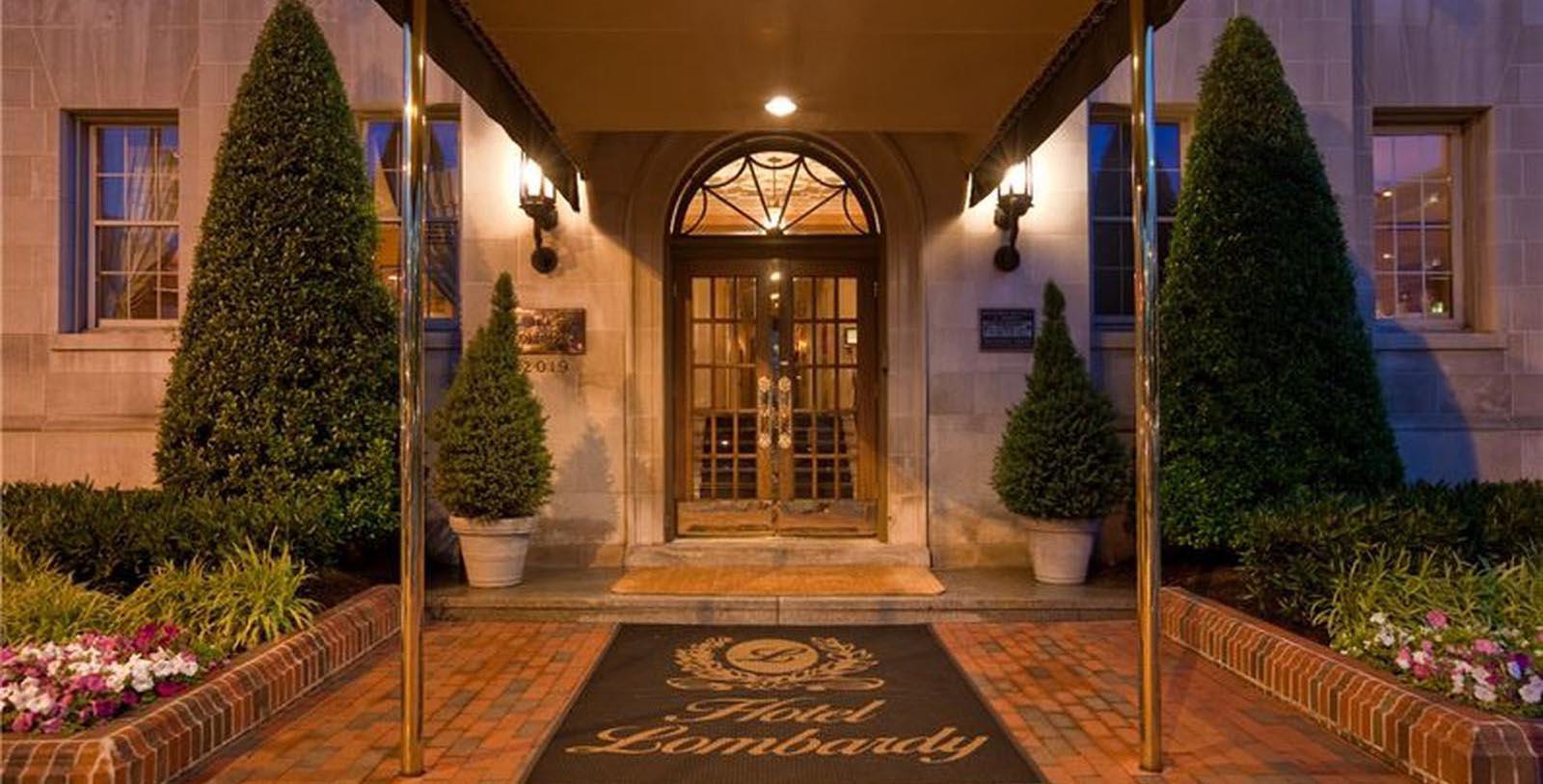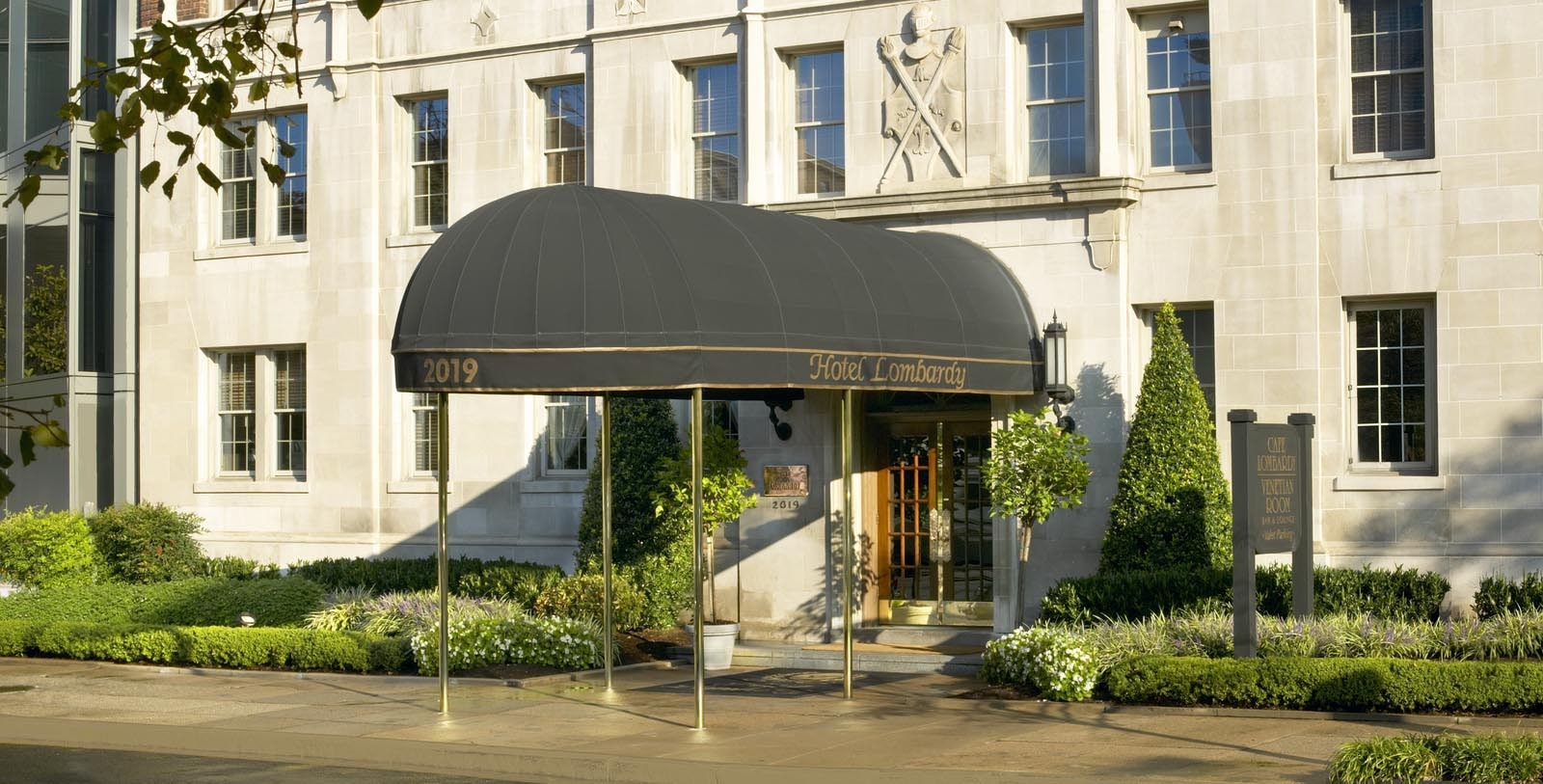Receive for Free - Discover & Explore eNewsletter monthly with advance notice of special offers, packages, and insider savings from 10% - 30% off Best Available Rates at selected hotels.
hotel lombardy history
Discover the Hotel Lombardy, an elegant hotel in Washington DC overlooking historic Pennsylvania Avenue.
Hotel Lombardy, a member of Historic Hotels of America since 2004, dates back to 1929.
VIEW TIMELINESituated on historic Pennsylvania Avenue, Hotel Lombardy in downtown Washington DC has been an alluring destination in the nation’s capital since welcoming its debut in 1929. Boasting a spectacular history, the building has witnessed countless historical moments like the Great Depression, World War II, the Civil Rights movement, and 20 Presidential inauguration ceremonies. Despite its celebrated status within the hospitality industry, the building has not always been active as a hotel. On the contrary, the structure first opened as an upscale residence complex right at the height of the Roaring Twenties. At the time, the surrounding neighborhood of Foggy Bottom was undergoing a period of economic decline. Much of the area’s diverse population had departed, seeking work in factories located elsewhere in the city. Nevertheless, a few enterprising individuals decided to capitalize on the slumping real estate prices and began building their own luxurious residences. This practice continued for some time, leading to the creation of countless structures like the brilliant housing facility that would eventually become the Hotel Lombardy. A new range of beautiful architectural styles gradually appeared all over the neighborhood as well, such as the magnificent Beaux-Arts-inspired motifs that defined the future Hotel Lombardy. The residence continued to be inhabited by numerous families over the next several decades, especially as the rest of Foggy Bottom reemerged all around it. Indeed, the neighborhood gradually recovered, becoming a major hub for government agencies in the wake of World War II. Then in 1994, the facility was brilliantly renovated into a wonderful European-style hotel called the “Hotel Lombardy.” It subsequently established itself as one of Washington’s most luxurious destinations, hosting all kinds of visiting dignitaries and businesspeople. A member of Historic Hotels of America since 2004, this amazing historic hotel continues to be among the top places to stay in the entire District of Columbia.
-
About the Location +
Located along the western bank of the Potomac River, Foggy Bottom is one of Washington’s most historic neighborhoods. Like Georgetown nearby, it was originally founded as its own town centuries ago. In 1763, a German immigrant named Joseph Funk specifically created the village, which he settled at the confluence of the riverfront and Rock Creek. While he called the community “Hamburg," residents in the area nonetheless referred to it informally as “Funkstown.” Given the town’s proximity to the Potomac, Funk had hoped it would become a prominent local port. Nevertheless, Hamburg was forced to compete against Georgetown’s already booming shipping industry. As such, Funk’s settlement remained fairly smally for many years thereafter. Absorbed into the newly formed District of Columbia in the 1790s, the community’s economic fortunes gradually changed for the better over the next several decades. At first, the maritime traffic driven by the Chesapeake & Ohio Canal helped jumpstart this growth. But the mass migration of European immigrants into the locale during the 1850s sparked widescale industrialization. The immigrants established numerous shops that manufactured all kinds of goods. Central European breweries in particular were very ubiquitous, the most notable of which was the “Christian Heurich Brew Company.” Opened by German native Christian Heurich, the business eventually blossomed into a massive industrial complex called the “Olde Heurich Brewing Company.” It made the Heurich family incredibly wealthy, with Christian Heurich even becoming one of the largest landowners in Washington for a time. Another major business to debut in the area was the Washington Gas Light Company, which generated power for the entire district. Largely staffed by the local Irish population, the company’s plant was one of the most recognizable features in Washington’s developing skyline.
Soon enough, the area was soon filled with dozens of towering factories. Indeed, the industrial activity was so great that a thick layer of smoke gradually blanketed the area, inspiring some locals to refer to it as “Foggy Bottom”—at least according to oral tradition. Regardless of its origins, the name “Foggy Bottom” became synonymous with the neighborhood by the height of the Gilded Age. The presence of so many factories continued to attract additional workers from across the world, too, including many black laborers from the American South. Foggy Bottom thus developed a strong African American community that formed its own rich culture and identity. Unfortunately for the residents of Foggy Bottom, the neighborhood’s prosperity was not destined to last forever. The ultimate demise of the Chesapeake and Ohio Canal in the 1920s spelled doom for the many businesses inside Foggy Bottom, which relied on its merchants to ship products. The factories subsequently shutdown and relocated to other places in the city that were closer to other forms of transportation. (Prohibition also shutdown many of the breweries, too.) Foggy Bottom’s teeming population left the area, too, reducing the neighborhood to a shadow of its former self. But several events occurred after World War II that saw Foggy Bottom resume being among Washington’s most prominent regions. The U.S. State Department made the decision to relocate its headquarters in the area, which was then followed by a wave of commercial redevelopment projects that lasted through the 1960s. Foggy Bottom subsequently reemerged as one of the city’s most luxurious places to live and to visit. The neighborhood has since maintained this status, attracting thousands of interested tourists each year. It is even home to many fascinating cultural attractions, including the John F. Kennedy Center for the Performing Arts and the historic campus of George Washington University.
-
About the Architecture +
Originally developed as an upscale private residence, the Hotel Lombardy displays a wonderful blend of architectural motifs inspired by the famous Beaux-Arts movement. Popularized around the dawn of the 20th century, this beautiful architectural form originally began at an art school in Paris known as the “École des Beaux-Arts” during the 1830s. There was much resistance to the Neoclassism of the day among French artists, who yearned for the intellectual freedom to pursue less rigid design aesthetics. Four instructors in particular were responsible for establishing the movement: Joseph-Louis Duc, Félix Duban, Henri Labrouste, and Léon Vaudoyer. The training that these instructors created involved fusing architectural elements from several earlier styles, including Imperial Roman, Italian Renaissance, ad Baroque. As such, a typical building created with Beaux-Arts-inspired designs would feature a rusticated first story, followed by several more simplistic ones. A flat roof would then top the structure. Symmetry became the defining character, with every building’s layout featuring such elements as balustrades, pilasters, and cartouches. Sculptures and other carvings were commonplace throughout the design, too. Beaux-Arts only found a receptive audience in France and the United States though, as most other Western architects at the time gravitated toward British design principles.































